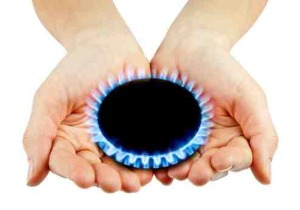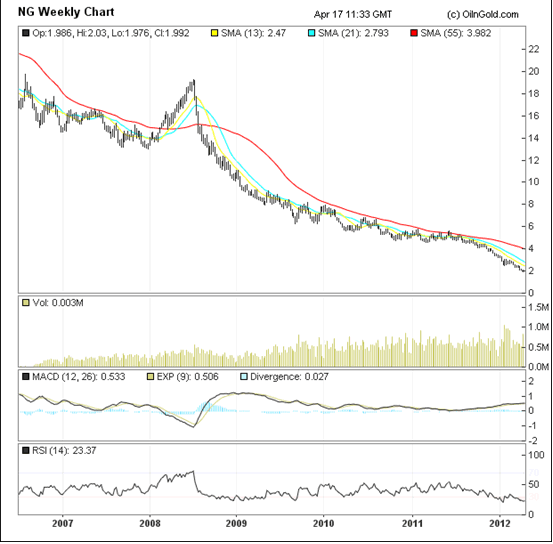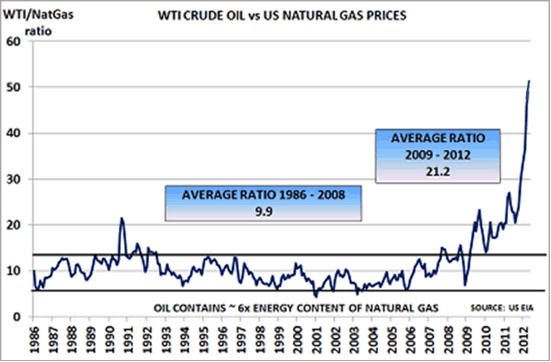 This week, the government gave the go-ahead for fracking to resume in Lancashire.
This week, the government gave the go-ahead for fracking to resume in Lancashire.
I know that I wouldn’t want anyone fracking around my house. Apart from the fact that it just sounds downright rude, the process is very controversial, not least because of the earth tremors it has caused, and the potential water pollution it could lead to.
It involves drilling deep into the rock, and injecting a high-pressure mix of water, sand and chemicals, causing the rock to split and the gas released.
Are we be being forced to do it because natural gas is in such short supply?
Are we heck.
US gas prices have dipped below $2 per million BTU (British thermal units) for the first time in a decade.
This is 90 per cent below the all-time high of $15.78 set in 2005.
The US reserves are bursting, thanks to shale gas (the type of gas released by fracking) and supply over there is outstripping demand.
Trading natural gas gets interesting
However, gas is not easy to transport, so tends to be used locally. Which is why Europe is a long way behind the US in terms of supply, and the European gas price is closer to $10.
Which is why the government is so keen to get extraction in Blackpool back on line.
But, it doesn’t explain the sudden interest in trading natural gas.
Trading volume in natural gas has increased by 31% in the first quarter of this year.
So why are traders so excited about the gas market?
As you can see from the chart below, the gas price has been in decline since 2008.

And there are two angles that traders are taking …
Some see this as a trend they can follow.
Others are looking for value, and trying to predict a bottoming out.
There’s little in the chart picture to suggest that gas has reached a bottom here, although commodities are often hard to predict from technical analysis alone, as they are very vulnerable to external factors.
The external factor that may come into play is: Russia.
Natural gas is one of the key Russian exports. But the fracking boom in the US means that the US, or countries closer to home could become gas exporters, or at least begin producing more of their domestic supply.
So we could see a natural gas price war developing across Europe and Asia.
Can we find any clues in the oil price?
Crude oil and natural gas are both energy commodities and should logically move in unison.
In theory, based on the energy each produces, they should have a price ratio of 6 to 1. So, if the price of natural gas is $5 per mBtu, then the value of a barrel of oil should be $30.
And, in the “old days” there was a trading strategy that would go long on oil if the ratio fell below this 6:1 average, or went long on gas if the ratio went above this 6:1 average.
But as you can see from the chart below, it’s been a long time since gas and oil prices paid any attention to the 6:1 ratio. They averaged 9.9 between 1986 and 2008, and this month spiked to a heady 52:1.

The balance between the two really evaporated in 2009, when shale gas exploration took off, and geopolitical events in the Middle East and North Africa added a premium to oil prices.
And, if you’re still feeling bullish that oil might be able to lift gas prices, it’s worth remembering that we’re in a presidential election year, so there’s considerable pressure on the US administration to keep oil prices down, as voters hate paying more at the pump.
So how can we profit from gas?
If you’re interested in trading natural gas, there are a few things you should know …
– The price you’re trading is for US natural gas, and the price of this is closely linked to local supply and demand, rather than global events or oil prices.
– Natural gas is volatile: these big moves can bring you fast profits, but can also knock out of trades just as quickly.
– All the action happens within the US session, around midday until 9pm UK time.
– I’ll always advise against trying to pick tops or bottoms. The best trading opportunities will be in the direction of the long-term trend.
